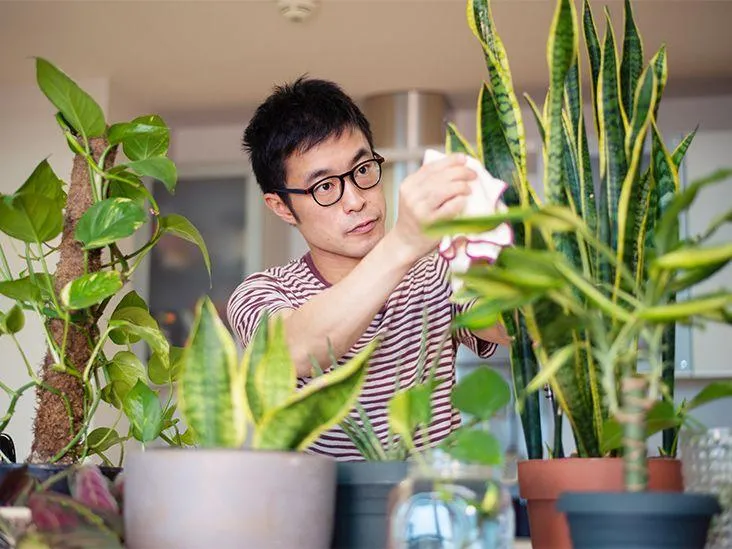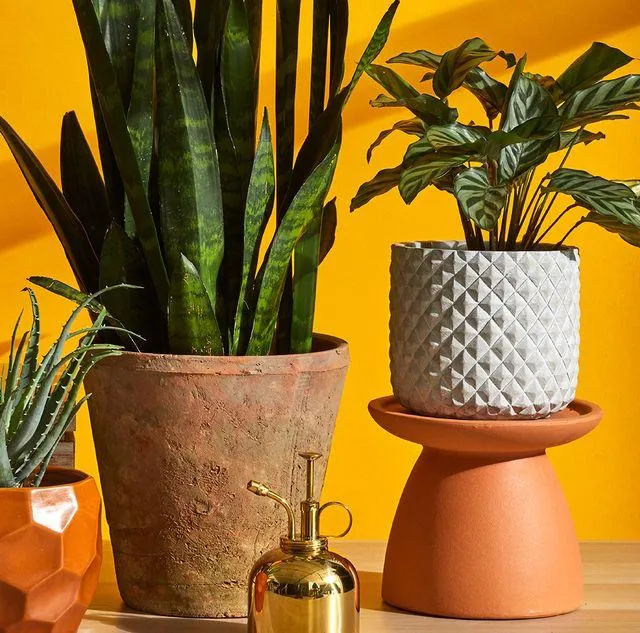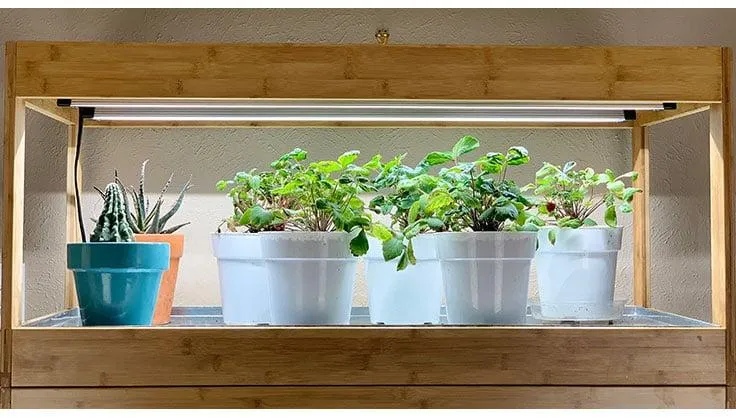The Ultimate Guide to Growing Amazing Plants Indoors
If you’re interested in growing plants inside your home but aren’t sure where to start, you’ve come to the right place. In this article, I’ll cover all the basics of indoor plant care as well as some specific plant recommendations to consider. By the end, you’ll have the know-how to start your own beautiful indoor jungle!
Choosing the Right Plants
The first decision is selecting which plants will thrive indoors. Not all plants are suited for interior conditions, so it’s important to choose species that can tolerate lower light levels and drier indoor air. Here are some top options to get you started:
- Pothos – One of the hardiest and easiest houseplants, pothos is virtually impossible to kill. It thrives in low to medium light.
- Snake plant – With tall grass-like leaves, snake plants are extremely low maintenance. They can go a month without water.
- ZZ plant – Known for its sturdy zig-zag stems, ZZ plants are tolerant of neglect and do well in low light areas.
- Peace lily – A beautiful option for bathrooms and rooms with low indirect light. Peace lilies indicate when they need water with drooping leaves.
Other great beginner plants include philodendrons, Chinese evergreen, spider plants, and English ivy. Avoid direct sun plants like cacti and succulents if you don’t have a bright, sunny windowsill. Start with low-light varieties suited to indoor conditions.
Providing the Right Environment
To keep your new plants happy, it’s crucial to give them the proper environment. Here are a few tips:

- Light – Most houseplants need medium to low indirect light, so east or west-facing windows are ideal. Use a grow light for plants in darker spots.
- Temperature – Keep temperatures between 65-80°F. Avoid placing plants near drafty windows or vents.
- Water – Water when the top inch of soil is dry but not completely parched. Overwatering is more dangerous than underwatering.
- Humidity – Use a pebble tray or humidifier to raise humidity for tropical plants like calatheas.
- Fertilizer – Feed monthly in spring and summer with a diluted liquid houseplant food.
Pay attention to your plants’ individual light and water needs, and you’ll avoid many common issues. Proper care equals healthy, happy housegreens.
Common Pests and Diseases
While preventable with good culture, houseplants may occasionally face issues from pests or diseases. Here are some of the most common culprits and solutions:
- Spider mites – These tiny spider-like pests cause webbing and leaf speckling. Spray with neem oil or insecticidal soap and quarantine infected plants.
- Mealybugs – Fluffy white spots that suck plant sap. Wipe off with cotton balls dipped in rubbing alcohol.
- Fungal leaf spot – Brown spots caused by overwatering. Improve drainage, remove infected foliage, and increase air circulation.
- Root rot – Soggy soils cause brown, mushy roots. Check for adequate drainage holes and allow soils to dry between waterings.
- Yellow leaves – Usually a sign of under or overwatering. Adjust watering and check for pests/disease also.
Prevention through clean growing conditions and pest monitoring is key. Isolating new purchases for a month also prevents introducing issues. With tender loving care, your indoor plants will stay radiantly green.
Advanced Plant Propagation Methods
When your plants start thriving, try multiplying your collection through some basic propagation techniques:

- Cuttings – Remove 4-6″ stem cuttings, allow to callous, and root in water or soil. Pothos, philodendrons, and spider plants root very easily this way.
- Leaf cuttings – Remove healthy leaves, place veined side down on moist soil, and wait for new plantlets to grow from the petioles. Works for plants like tradescantia.
- Division – Gently separate crowded root balls or offset plantlets from the mother plant. Replant to encourage fullness.
- Seeds – Many tropical plants like impatiens and coleus self-sow seeds easily when conditions are right.
With a little patience, you’ll end up with exponentially more plants to enjoy indoors. Experiment and see which methods your specific plants prefer. Happy propagating!
Final Care Tips
To keep your indoor plants looking their finest for years to come, follow these last pieces of advice:
- Dust leaves occasionally to remove debris and promote photosynthesis.
- Rotate plants to encourage even growth and prevent leaning toward windows.
- Prune off dead or damaged foliage to maintain an organized appearance.
- Repot rootbound plants in fresh potting mix in spring to prevent stunted growth.
- Enjoy your plants by learning their botanical names and unique characteristics.
With basic care rituals and some trial and error, you’ll soon gain a green thumb for indoor plants. Most of all, be patient and kind to your leafy companions. Happy gardening, indoors and out!
I hope this helps give you confidence to start growing beautiful plants inside your home. Let me know if you have any other questions! Wishing you the best of success with your new indoor jungle.

Top Houseplants for Indoor Growing
| Plant | Size | Care Level | Light Needs |
|---|---|---|---|
| Pothos | Small to Medium | Low | Low |
| Snake Plant | Medium to Large | Very Low | Low |
| ZZ Plant | Small to Medium | Low | Low to Medium |
| Peace Lily | Small to Medium | Low | Medium |
| Philodendron | Small to Large | Low | Low to Medium |
| Chinese Evergreen | Small to Medium | Low | Medium |
| Rubber Plant | Medium to Large | Low | Medium |
FAQ
-
What types of plants can I grow inside?
Lots of different plants can grow well inside homes and offices. Some popular choices are: snake plants, pothos, succulents, peace lilies, Chinese evergreens, and spider plants. These plants need less light and water than others.
-
Do indoor plants need sunlight?
Most indoor plants definitely require some sunlight every day, if not a whole lot. Plants use sunlight to perform photosynthesis, which is how they make their own food. Nevertheless, you’ll find that certain plants can tolerate lower light conditions pretty well, like the types listed in the previous question. On the other hand, other plants will usually struggle without ample sunlight.
-
How often should I water indoor plants?
The amount of water indoor plants need basically depends on a variety of factors – the size of the plant, the pot it’s in, the plant type, and the conditions. Some say as a general rule, plants should be kept evenly moist but not soggy wet. So you’ll maybe want to check the soil every week or so and water when the top inch or two starts to dry out. However, plants like succulents and cacti only need water once every couple weeks or months.
-
What is the best potting mix for indoor plants?
Most plant pros recommend using a potting mix specially made for houseplants rather than regular garden soil. Look for a mix that drains well but keeps some moisture, like ones containing peat moss and perlite. Stay away from potting soils for vegetables because those are often too dense. Although there’s some debate on this, weed-free topsoil combined with perlite and compost can also work amazingly if you can’t find a packaged mix.

-
How do I keep my indoor plants healthy?
To keep indoor plants thriving, give them the right amount of sunlight, water when the soil slightly dries, and occasionally fertilize during the growing season. Prune away damaged or dead parts. Repot plants that have outgrown their containers. Check plants regularly for signs of pests like spider mites, and treat problems kind of early before they spread. Likewise, place plants in spots with good air circulation to prevent powdery mildew and other fungus issues. It basically comes down to providing the conditions they need to survive inside.
-
What are common pests and diseases of indoor plants?
Two pests that frequently plague indoor plants are spider mites, which are tiny pests that suck the sap out of leaves, and scale insects, which appear as hard, shell-like bumps on leaves or stems. Mealybugs are fluffy white bugs that feed on plant sap also. As for diseases, powdery mildew causes a white, fuzzy growth and leaf spots can stunt growth. But with preventive measures like inspection and cleaning, many problems can be avoided or solved before getting out of hand.
-
Are some plants better Air Purifiers than others?
Some research apparently shows that certain plants clear toxins from the air more successfully than others. English ivy, bamboo palm, and spider plants are strong air purifiers that remove chemicals like benzene and formaldehyde. Peace lilies and gerbera daisies also rank at the top. On the flip side, some “lowly” plants like pothos and dracaena may not be quite as effective. Nevertheless, even just a few common houseplants can apparently make a difference in improving indoor air quality.
